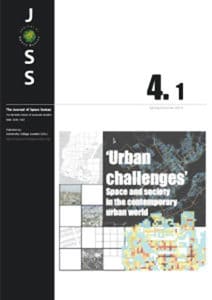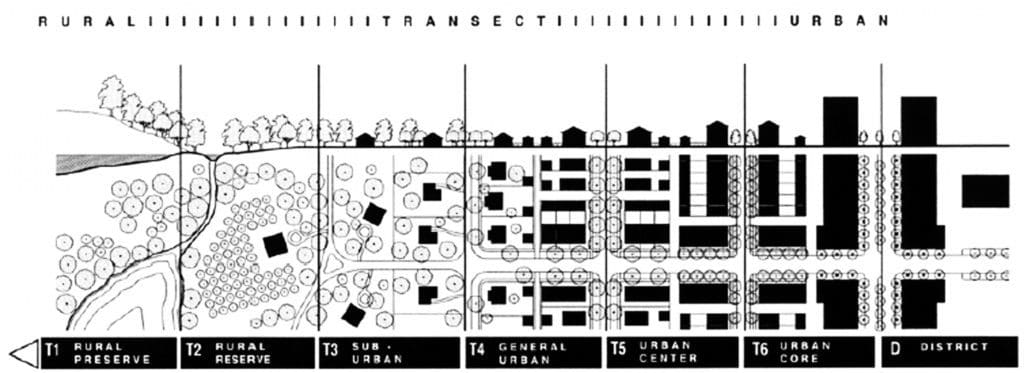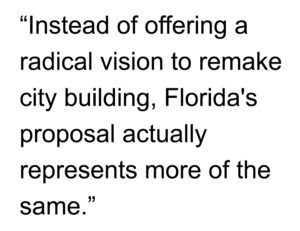 “The city’s essential DNA: Formal design and spatial processes in the urban patterns” by Mark David Major is now available in Vol 4, No 1 (2013) of The Journal of Space Syntax. Read an excerpt below:
“The city’s essential DNA: Formal design and spatial processes in the urban patterns” by Mark David Major is now available in Vol 4, No 1 (2013) of The Journal of Space Syntax. Read an excerpt below:
Our descriptions of cities are often based on their physical form. In urban theory, these descriptions are usually expressed in terms of a dichotomy whereby meaning emerges from contrasting cities as organic or regular, unplanned or planned, natural or artificial, generated or imposed, and so on (Gallion and Eisner, 1963; Alexander, 1965; Moholy-Nagy, 1968; Batty and Longley, 1984). Kostoff (1991) suggests this dichotomy is ‘the most persistent, and crudest, analysis of urban form’. Hillier et al. (2012) even argue that ‘we should abandon the long-standing distinction between geometric and organic cities’ because it does not adequately address the deliberate use of geometry at different scales of the city (p.187). Notably, the first stresses process over time in terms of ‘unplanned evolution’ or ‘instinctive growth’, whereas the second stresses the conscious act of design in a ‘centrally planned scheme’ (Kostoff, 1991, p.43). This ‘shorthand’ provides a basic understanding of cities across different times, cultures, and geographical regions. The usefulness of descriptions such as ‘organic’ or ‘regular’ lies precisely in the fact they are theory-loaded terms. They seemingly convey a lot of information in an easy-to-grasp manner. We say ‘seemingly’ because these terms are so theory-loaded they can often lead to confusion, which can make their descriptive value ‘more a hindrance than an aid’ (Kostoff, 1991, p.43). For example, ‘regular’ seems to be an explicit description of both the physical form and design process that gave rise to that composition. However, the term ‘organic’ seems to only pertain to process. According to Batty and Longley (1994), organic cities ‘grow naturally from a myriad of individual decisions at a much smaller scale than those which lead to planned growth. Planned cities or their parts are usually more monumental, more focused, and more regular’ (p.8). The term ‘deformed’ is sometimes used to describe the physical form of organic cities, but more often than not, is tacitly understood to be a given about such cities. This explicit and implicit description of urban form and process forms the basis of their descriptive value, since most cities are easily classified as having common or different attributes when characterised as organic or regular.
Download a PDF of the full article here: The city’s essential DNA: Formal design and spatial processes in the urban patterns | Major | The Journal of Space Syntax.
UPDATE: The Journal of Space Syntax has now included the images in the article available at the link above. However, they are also below for your reference.




(Comment from Steve Mouzon) I’ve always found the classical-vernacular/refined-organic useful when considering urbanism. A couple quirks to consider: A highly talented planner can do a competent job with an organic plan, but a vernacular process will never produce a rigid grid. With that having been said, the best might do a bit better than competent, like Leon Krier at Poundbury, but Poundbury isn’t as good as dozens of Cotswold towns built by the townspeople. Most planners are not nearly so good as Krier, so each pole of the spectrum is obviously really good at what they do. FWIW, I regard Krier as the personification of classical planning, and Christopher Alexander as the personification of the vernacular process. We need them both, although neither of them realize that. I had a good conversation with Krier about that one night in South Bend. I’ve heard about Space Syntax for years, but have no meaningful knowledge of it. Someone (you, I hope) should blog a description that’s clear and descriptive to the rest of us.





 The circus of Senate confirmation hearings for the Secretary of Cities, brought to you by National Ready Mixed Concrete Association and Community Organizations International, just as soon as the Senator from Montana releases his hold on the nomination! Stay tuned! More pigs feeding at the Federal trough would inevitably populate Florida’s Department of Cities. That is fine for the pigs but what about the rest of us?
The circus of Senate confirmation hearings for the Secretary of Cities, brought to you by National Ready Mixed Concrete Association and Community Organizations International, just as soon as the Senator from Montana releases his hold on the nomination! Stay tuned! More pigs feeding at the Federal trough would inevitably populate Florida’s Department of Cities. That is fine for the pigs but what about the rest of us? The only way a Federal Department of Cities could alter the prevailing development paradigm in this country for the last century is if we are willing to place Smart Growth for our cities at the top of the agenda by subsuming the Department of Transportation, Department of Housing and Urban Development, Environmental Protection Agency, and other disparate Federal agencies and offices (Office of Urban Affairs, and so on) under one roof. Incidentally, this is probably the only way a new Department of Cities could generate bipartisan support by allowing the left and the right to explicitly address their key constituencies (urban interests on one hand, reducing and streamlining government on the other). It would also require both parties adopting an united front to take on other special interests threatened by such reform (most obviously, radical environmentalists). In the absence of such radical thinking, our cities are safer as “laboratories for pragmatic bipartisan policy innovation, pioneering new approaches on everything from schools, crime and gun control to economic development” at the local and State level.
The only way a Federal Department of Cities could alter the prevailing development paradigm in this country for the last century is if we are willing to place Smart Growth for our cities at the top of the agenda by subsuming the Department of Transportation, Department of Housing and Urban Development, Environmental Protection Agency, and other disparate Federal agencies and offices (Office of Urban Affairs, and so on) under one roof. Incidentally, this is probably the only way a new Department of Cities could generate bipartisan support by allowing the left and the right to explicitly address their key constituencies (urban interests on one hand, reducing and streamlining government on the other). It would also require both parties adopting an united front to take on other special interests threatened by such reform (most obviously, radical environmentalists). In the absence of such radical thinking, our cities are safer as “laboratories for pragmatic bipartisan policy innovation, pioneering new approaches on everything from schools, crime and gun control to economic development” at the local and State level. Why would we expect our citizens (and their representatives) to ever trust us and put us in charge when we have demonstratively failed our cities time and time again during their lifetime, their parents’ lifetime, and their grandparents’ lifetime? Instead of searching for magic bullets (like Florida’s idea), let us dedicate ourselves to leading for our cities. The irony is, if we truly did this, we would probably find the perceived need for Florida’s proposal and others like them would disappear. Unless, of course, the point is to become one of the fattest pigs at the trough. If this is the case, then never mind…
Why would we expect our citizens (and their representatives) to ever trust us and put us in charge when we have demonstratively failed our cities time and time again during their lifetime, their parents’ lifetime, and their grandparents’ lifetime? Instead of searching for magic bullets (like Florida’s idea), let us dedicate ourselves to leading for our cities. The irony is, if we truly did this, we would probably find the perceived need for Florida’s proposal and others like them would disappear. Unless, of course, the point is to become one of the fattest pigs at the trough. If this is the case, then never mind…
 However, it does seem to contradict the findings of a recent survey by the International Association of Ice Cream Distributors & Vendors that suggested 96% of American children actually want ice cream for every meal. A spokesman for the American Dental Association was kind enough to take time away from a vacation on his yacht off the coast of Barbados to comment, “We don’t see how the results of these different surveys about what American children want to be provided for their daily nutrient requirements can be viewed as in conflict with one another in any feasible manner.”
However, it does seem to contradict the findings of a recent survey by the International Association of Ice Cream Distributors & Vendors that suggested 96% of American children actually want ice cream for every meal. A spokesman for the American Dental Association was kind enough to take time away from a vacation on his yacht off the coast of Barbados to comment, “We don’t see how the results of these different surveys about what American children want to be provided for their daily nutrient requirements can be viewed as in conflict with one another in any feasible manner.”